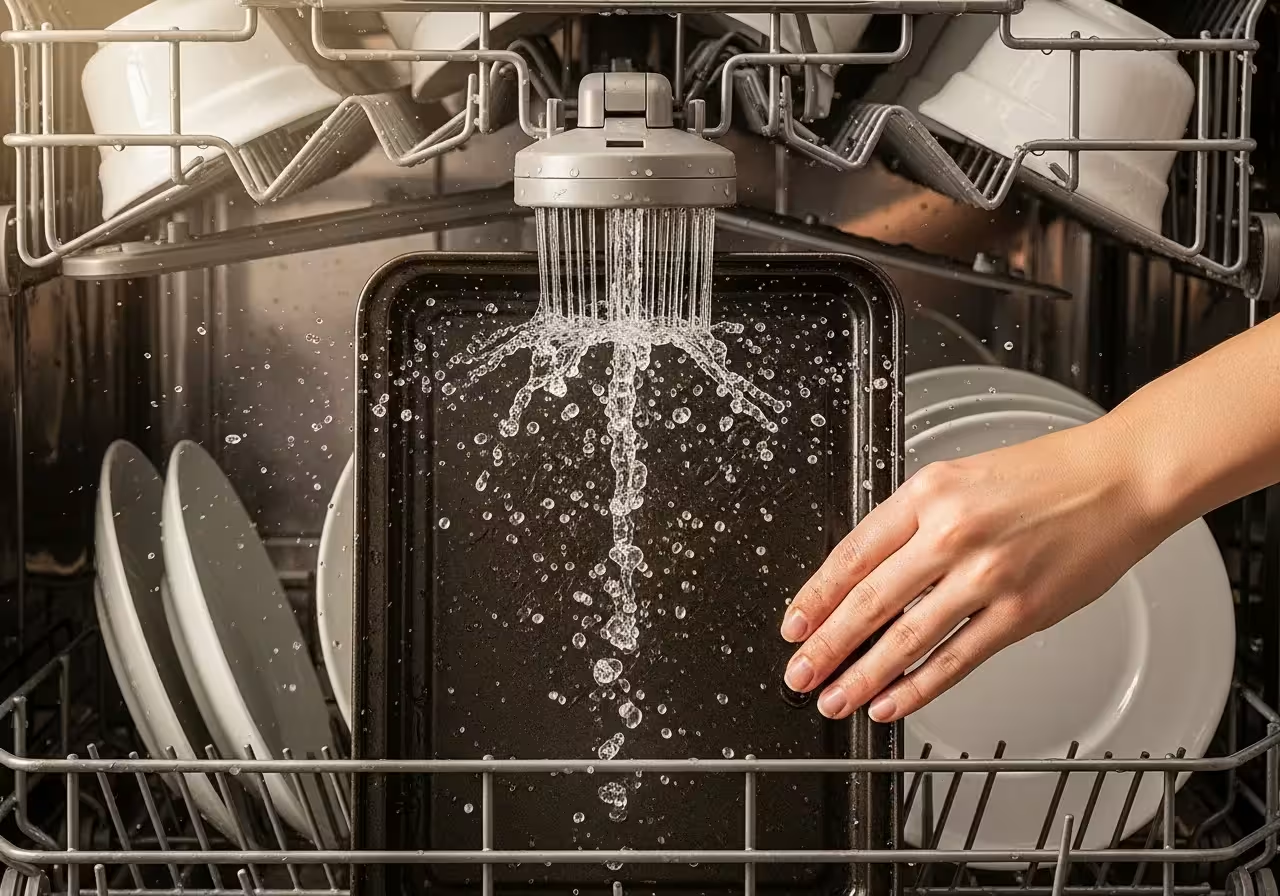
Common Dishwasher Loading Mistakes and How to Fix Them
Even with the best intentions, a few common mistakes can sabotage your dishwasher’s performance. Being aware of these pitfalls is the final step to becoming a true dishwasher loading expert.
Mistake 1: Blocking the Spray Arms
The Problem: A tall baking sheet, a long panhandle, or a large utensil hanging down from the top rack physically obstructs the path of a rotating spray arm. If the arm can’t spin, huge sections of your dishwasher won’t get any water at all.
The Fix: Always give the spray arms a quick, gentle spin with your hand after loading each rack and before starting the cycle. If you feel any resistance or hear a clicking sound, find the offending item and reposition it.
Mistake 2: Overloading the Machine
The Problem: In an attempt to save time or energy, it’s tempting to cram just one more dish into a full rack. However, an overloaded dishwasher is an inefficient dishwasher. When items are packed too tightly, water cannot circulate between them, and they will come out dirty.
The Fix: Respect the space between dishes. If you have to force an item into place or if it’s touching its neighbor, the rack is too full. It is far more efficient to run two properly loaded cycles than one overloaded cycle that requires half the dishes to be re-washed. Running full—but not overfull—loads is a key principle of home energy efficiency, a topic you can explore further with resources from the U.S. Environmental Protection Agency (EPA).
Mistake 3: Putting the Wrong Items in the Dishwasher
The Problem: Not everything is dishwasher safe. The combination of high heat, prolonged moisture, and harsh detergents can ruin certain materials.
The Fix: Create a mental “Never Wash” list. This should include:
Cast Iron: It will strip the seasoned oil coating, causing it to rust.
Good Knives: The high heat can damage the handle, and the harsh detergent will dull the blade’s sharp edge. The blades can also chip your racks.
Wooden Utensils and Cutting Boards: The heat and water will cause the wood to warp, swell, and crack.
Non-stick Pans: The high heat and abrasive detergents can degrade the non-stick coating over time. Always check the manufacturer’s instructions; some are rated dishwasher-safe, but handwashing will always extend their life.
Insulated Travel Mugs: The process can break the vacuum seal between the inner and outer layers, ruining their insulating properties.
Delicate Crystal and Hand-painted China: The heat and detergents can cause chipping, cracking, or permanent cloudiness (etching).
Mistake 4: Blocking the Detergent Dispenser
The Problem: Placing a large cookie sheet or a tall platter in front of the detergent dispenser door will prevent it from opening fully during the cycle. If the soap can’t get out, your dishes won’t get clean.
The Fix: Be mindful of where your dispenser is located (usually on the inside of the door) and make sure no items on the bottom rack are positioned in a way that would block it. After loading, glance at the door to ensure it has a clear path to spring open.

















